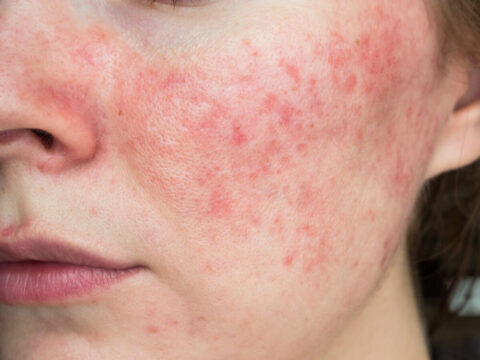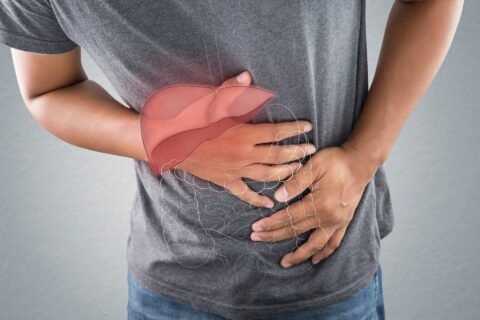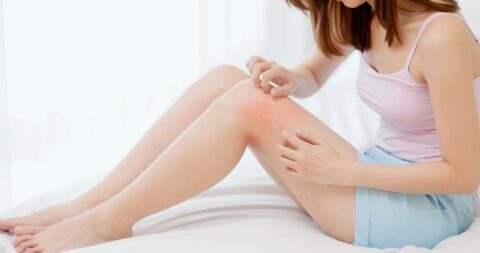Seeing blood vessels through the skin in the hands and wrist is normal, but their appearance in other parts of the body is often a cosmetic concern. Before looking for the right treatment to get rid of these unsightly veins underneath the skin, it’s important to know the difference between them first.
So what’s the important difference between spider veins and varicose veins? The first thing to notice about spider and varicose veins is how they look – spider veins are easily visible in small groups underneath the skin while varicose veins are bulged veins that may be blue or purple. Spider veins also form in the capillaries while a varicose vein forms in the larger vein wall.
The Difference Between Spider Veins and Varicose Veins
Chronic venous insufficiency is the condition in which the blood veins don’t allow the blood to flow back to the heart as normal. This causes the blood in the affected veins to pool in the legs and form spider veins and varicose veins. The appearance of these veins is a common vein problem for about 3 out of 10 adults in the US.
Although they’re both types of venous disease, spider veins, and varicose veins are different from each other. Here are some of the ways to correctly identify them:
1. Appearance
Reticular veins (or spider veins) are the visible veins that appear as red, blue, or purple on the skin. They’re a cluster of small spider webs or branches close to the skin’s surface. Most people find spider veins on their legs and faces. Spider veins are not usually an indicator of poor health conditions, but many women have them treated for cosmetic reasons.
On the other hand, a varicose vein is much larger than a reticular vein. They typically bulge above the skin and are mostly found in the legs or thighs. Most cases of varicose veins are cosmetic, but patients might feel symptoms like heaviness, swelling, or discomfort in their legs. They might also lead to blood clots, skin ulcers, saphenous vein thrombosis, deep vein thrombosis, and non-healing sores in some cases.
Aside from heaviness and discomfort in the legs, some patients also experience cramping and itching with spider veins and varicose veins. The body’s hormone levels also affect the intensity of the symptoms, which is why women in their period, menopause, or pregnancy often experience worse symptoms.
2. Causes
Spider veins and varicose veins are two vein conditions that occur when there’s a problem with the valves (like venous reflux) of the blood vessels. A healthy vein is responsible for circulating the blood back to the heart. Veins usually have one-way valves that close when the blood passes through them to prevent the blood from flowing backward.
If a valve becomes damaged inside the blood vessel, the blood struggles to flow in the right direction. This causes the blood to pool inside the vein until it creates a bulge that’s felt on the skin’s surface. Spider veins are the result of the tiny blood vessels bursting due to sun damage or increased pressure, but varicose veins only form because of the pooling of blood caused by the damaged valve.
Most damaged veins appear in the legs because they’re further from the heart than other areas of the body. They’re also much closer to the ground, which is why the blood fights against the pull of gravity just to return to the heart.
3. Risk Factors
Although they have their differences, spider veins and varicose veins share similar risk factors like:
- Heredity – People with parents who have damaged veins are also more likely to develop spider veins or varicose veins in their legs and other parts of the body.
- Hormonal Changes – Hormonal treatment for menopause and birth control for women increases the risk of developing spider and varicose veins. The estrogen in these medications weakens the valves inside the affected veins.
- Pregnancy – Pregnant women have increased blood flow in their bodies. The added weight of the fetus also contributes to the pressure on the leg veins during their pregnancy, which is why many reticular veins form in the area. Some patients might notice the disappearance of these veins after their pregnancy, but it might also develop into a permanent vein condition in their body.
- Gender – Women are more likely to have spider veins than men.
- Age – The valves weaken over time, especially the ones located near the calf muscles. These muscles that support the veins and help them pump the blood upwards lose some of their strength as an individual gets older.
- Weight – Excess body weight puts additional pressure on the leg veins.
Treatments for Spider Veins and Varicose Veins

Damaged veins ruin the flawless smooth skin for women, which is why most of them look for different superficial vein or varicose vein treatment options. Here are some of the most common procedures to eliminate spider veins and varicose veins:
1. Compression Stockings
Compression socks and stockings pressure the veins in the lower legs, resulting in improved blood flow that prevents the appearance of more spider and varicose veins. They also alleviate swelling and prevent blood clot in the legs. Compression stockings also come in different types like support pantyhose, gradient compression stockings or socks, and prescription compression stockings.
2. Sclerotherapy
Sclerotherapy is a non-surgical treatment that involves the injection of a sclerosant into the affected vein. This shrinks the enlarged vein and reduces swelling until they slowly fade or vanish. Some patients might need several treatments to get the best results. Patients are also asked to wear compression stockings for a few days or weeks after the procedure.
3. Laser Treatment
Laser treatments are also used to eliminate spider veins that are around 3mm close to the skin’s surface. The laser causes the vein to dry up or clot until it disappears after a few days. Laser treatments are less invasive than sclerotherapy because it doesn’t involve injections.
4. EVLT
Endovenous Laser Therapy (EVLT) is a treatment for small varicose veins and spider veins. During the procedure, the vein doctor applies anesthesia, creates a tiny incision in the affected vein, and inserts a laser fiber that heats the vein until it collapses. The visible vein might take several months to disappear.
5. Phlebectomy
Ambulatory phlebectomy is recommended for patients who have large varicose veins that can’t be treated with sclerotherapy alone. During phlebectomy, the vein specialist creates tiny punctures on the skin to remove the abnormal veins in the area.
6. Surgery
Spider veins often respond well to non-invasive treatments, which is why surgical procedures are only recommended for patients with varicose veins. Plastic surgery for varicose veins typically involves litigation (tying the veins off) or vein removal (stripping of the diseased vein) to allow the healthier veins to regulate the blood flow in the area. The vascular surgeon applies general or spinal anesthesia before fixing the vein issue.
7. Radiofrequency Ablation
This vein disease treatment is utilized to get rid of the abnormal and bulging veins around the legs and thighs. The doctor uses a special device to deliver radiofrequency energy to eliminate the abnormal feeder veins in the affected area.
Read more: Spider Veins Treatment Costs: How To Make Spider Vein Treatment Worth It
Find Effective Vein Treatment Options for Vascular Disease at Vein Center Doctor Today
Whether you’re dealing with spider veins, varicose veins or other kinds of vein disorders, Vein Center Doctor has plenty of treatment options for you. Our team of medical and cosmetic experts is experienced in performing non-surgical treatments to eliminate the damaged vein and relieve swelling of the leg vein.
Find out which vein treatment option is the best for you by consulting with a vein expert here at Vein Center Doctor. Visit our website or call us now to book an appointment.







